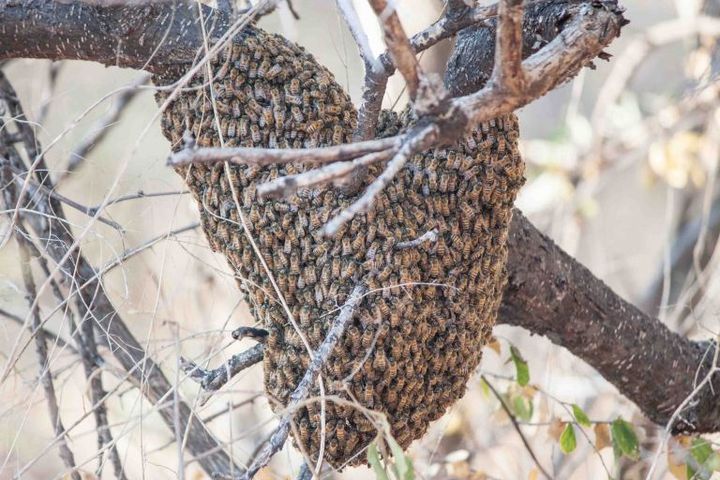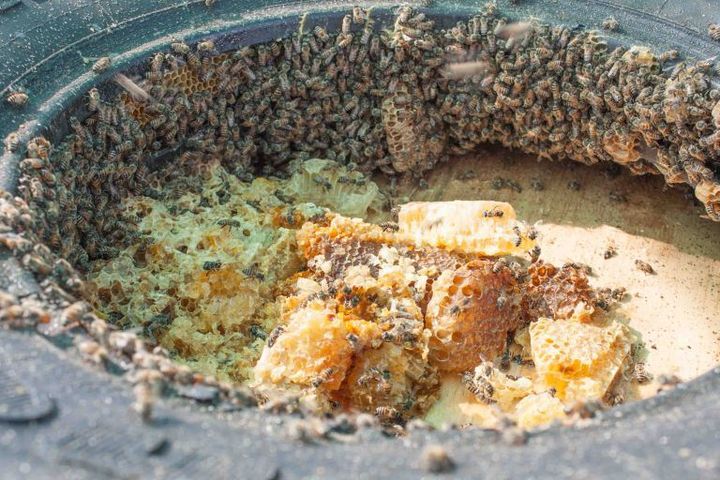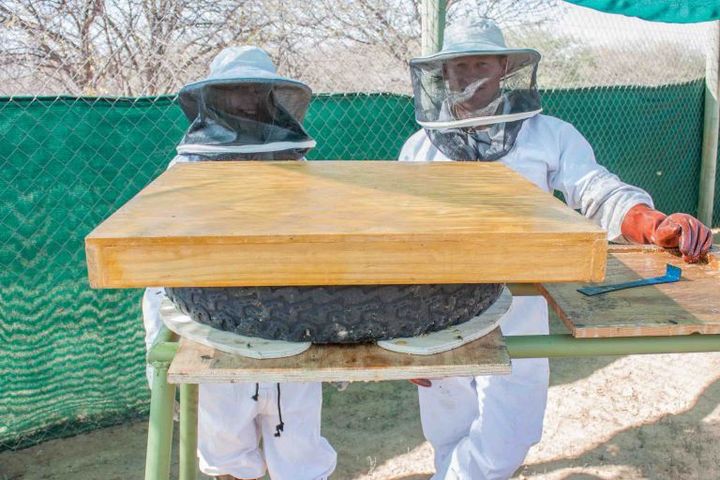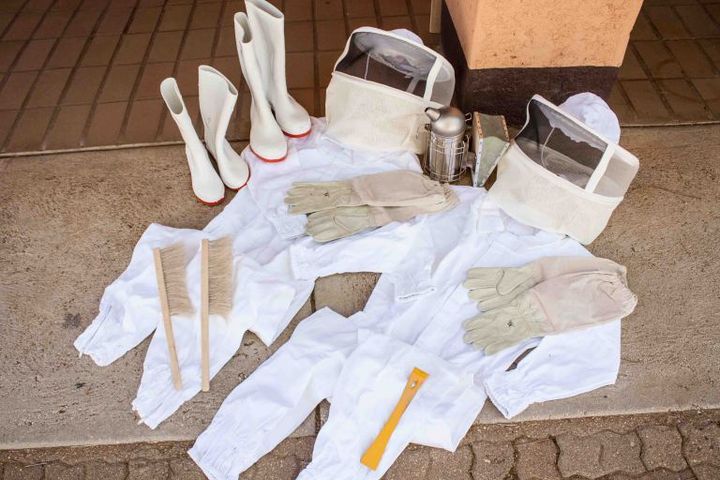
Bee swarm at CCF.
Happy National Honey Bee Day from Cheetah Conservation Fund! What do bees have to do with saving cheetahs? At the Cheetah Conservation Fund in Namibia, we approach saving cheetahs in a multitude of ways. One of the main threats to cheetahs is competition with livestock – grazing is widespread in Namibia. If we can add value to the landscape in ways other than grazing livestock, this creates less threat to cheetahs. Beekeeping is a way to add value to the land while lightening grazing impacts, reducing competition between wild ungulates and livestock, and therefore lessening threats to cheetahs. And in a time where the world’s honeybee populations are declining, propagating honeybee colonies can mean saving both bees and cheetahs.
Beekeeping in Africa is very different than beekeeping in the United States, for example. Because of shipping honeybees from around the world to the U.S. for agriculture, U.S. honeybee populations are riddled with pests and diseases. These pests and diseases are shared among honeybee colonies without enough time for resistance to evolve, and populations are plummeting. A small mite called Varroa destructor, which carries 18 different pathogens in its mouth, is among the worst of the bees’ problems and is guaranteed to be found in every colony in the entire United States. The good news about beekeeping in Southern Africa is that many of these pests and diseases, including the Varroa mite, don’t exist.

CCF’s feral beehive living in a tire.

The new and improved feral tire hive.
At CCF we have a model farm designed to teach Namibian farmers how to care for their livestock in a way that protects both the livestock and predators such as the cheetah. Integrating honeybees into the farm was a natural step. We had a long term volunteer, Jenna Brager, come to live at our center and get our apiary started. (Apiary is the term for a bee yard, where beehives live.) Jenna is a skilled beekeeper who has been teaching small-scale beekeeping as part of an integrated and sustainable agricultural system for many years in California. Learn more about Jenna Brager’s work with bees at www.jennabragerbeekeeping.com
Jenna’s research at CCF led to finding that Namibia’s Directorate of Forestry had the same idea about bees helping farmers and adding value to the land. So CCF collaborated with the Directorate of Forestry to teach a beekeeping class at CCF, bring in matching funds for equipment and gear, and bring in a feral honeybee colony from a nearby farm to CCF’s model farm. The feral colony of bees came in established inside of a tire. While Jenna and a team tried to remove the colony from the tire, it proved to be too destructive and too much of a threat to the longer term survival of the colony, so they kept this colony living on inside the tire, in hopes that it would send out swarms (bees natural way of propagating) which could be caught and put into hive boxes. Then, as though like attracts like, a swarm landed at CCF the same week! The swarm was caught, twice actually, and promptly moved out of the hive boxes and onward, not to stay at CCF’s apiary. While pests and diseases are less threat than in the U.S., apparently it is common for bees to “abscond,” suddenly leaving the hive, in Namibia.
Namibia is not immune to declining honeybee populations, as is happening around the world. The drought affecting southern Africa in recent years has had a huge impact on honeybee populations. Without rain, flowers can’t produce as much nectar. Without nectar, bees cannot produce honey. Bees make honey from flower nectar and depend on these honey stores to survive during times when flowers are not blooming. Drought causes honeybee populations to decline and die out due to starvation. And flowers can be misleading – during drought years one may still see lots of flowers, but the flowers, too, know to conserve their own resources and may not offer any nectar for the bees.

Beekeeping protective gear and tools.
While the vast majority of Namibia’s agriculture is in livestock ranching, still honeybees pollinate many of the fruit and vegetable crops grown, and Namibia’s crop production is on the rise. Tomatoes and peppers are among the top seven crops produced in Namibia, and both require honeybee pollination to produce the part we eat. Other crops require honeybee pollination in order to produce seeds and be replanted. Honeybees are a critical part of Namibia’s ecosystems and food systems.
At CCF, saving cheetahs and saving bees go hand in hand. We can use our model farm to teach beekeeping skills and demonstrate how bees add value to a landscape. If a farmer has land degraded from excessive livestock grazing, he can give the land a rest and still generate income from bees and honey. Additionally, while letting the land rest, it can regenerate and ultimately bring back more of the flowers that will feed the bees. With improved livelihood and reduced grazing, there is far less incentive to shoot cheetahs. It’s win-win for cheetahs, bees, farmers, and the ecosystem.
#FeedABee #NationalHoneyBeeDay
